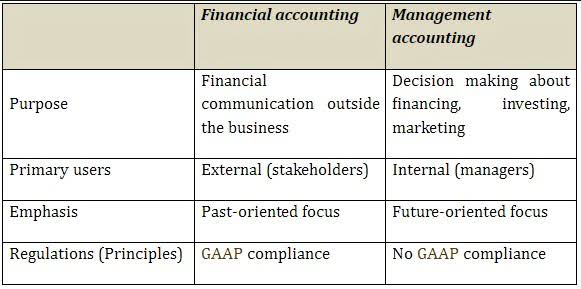
A public charity means that the organization relies upon a combination of donations from the public, fee-for service payments, or grants from government or private sources, for a significant portion of its revenues. Strict rules apply to both the activities and the governance of these organizations to ensure they truly fulfill their IRS-defined purposes. This means that the organization’s work should solely serve its charitable purpose, not aiming to benefit shareholders or influence legislation in any way. You can be paid as an employee or contractor of a nonprofit organization you founded, as long as the board of directors chooses to hire you. It’s common for a board to hire a nonprofit founder as the organization’s CEO or executive director, which is typically a salaried position.
- The varied definitions and ideas on how to go about creating them inevitably create conflict, confusion and barriers to even getting started on your business plan let along executing on it.
- Check the IRS website and instructions to the form which include an Eligibility Worksheet you must complete to determine if your nonprofit meets the requirements for using the shorter streamlined form.
- Hurdles and challenges should not keep you from your important mission!
- These ventures help reduce human suffering, improve conditions for animals and the environment, and bring awareness to humankind’s most pressing problems.
- This means the majority of board members should not be related by blood, marriage, or outside business connection.
- In order for a corporation or other qualifying entity to receive 501(c)(3) status, it must apply to the IRS for recognition by filing Form 1023 (or Form 1023-EZ), Application for Recognition of Tax Exemption.
Join the fundraising movement!
The Internal Revenue Code (IRC) is the federal tax law of the United States, enforced by the IRS and contains over 9,800 sections that are specific to various types of taxes. Get in touch with our CPAs today for comprehensive nonprofit tax services and support. Let us help you focus on your mission while we handle the complexities of compliance, offering you invaluable peace of mind. State regulations closely monitor fundraising activities, especially those involving chance-based events. Raffles, auctions, and gaming activities require particular attention since most jurisdictions mandate specific licenses. Organizations need to carefully consider potential tax implications, including both unrelated business income and requirements for tax withholding from winners.
- This matters when it comes to attracting donors because individuals receive a greater benefit on their personal Form 1040 tax filings when contributing to a public charity versus a private foundation.
- You must complete and submit the appropriate application, along with the required user fee, through Pay.gov.
- Before you even think about drafting up your articles of incorporation, you’ll need to find some people to run your nonprofit organization.
- The bylaws contain the operating rules and provide a framework for your management procedures.
- Once classified into one of the above categories, an organization must also be defined as a public charity or as a private foundation.
- Maintaining a charity’s legal and tax-exempt status involves ongoing compliance.
Best Practices for Monitoring an Organization’s Public Support Ratio
Then, consider people in your network who might be interested in and passionate about your mission. Check with your state department of consumer affairs (or similar state licensing agency) for information concerning state Debt to Asset Ratio licensing requirements for your type of organization. For instance, if you sell anything to consumers, you’ll need a sales tax permit, and your activities may require a zoning permit. Your state’s corporations office can tell you how to find out whether your proposed name is available for your use.
- Define pay rates for each position and communicate them in the employee handbook.
- A nonprofit business plan opens with a mission statement that describes for internal stakeholders what you do, how you do it and why you do it.
- Smaller nonprofits may be eligible to file Form 1023-EZ, Streamlined Application for Recognition of Exemption Under Section 501(c)(3) of the Internal Revenue Code.
- Check out our features to learn why more than 100,000 organizations trust Donorbox to boost their fundraising.
- The Statement of Exempt Purpose tells the IRS that the organization exists to serve a truly charitable purpose.
Meeting State Fundraising Registration Requirements
Although they love and support you in all endeavors, friends and family members aren’t the best candidates for fulfilling a working board’s many responsibilities. I speak and write on nonprofits and social enterprise based on my track record of forming nearly 5,000 nonprofit 501(c)3 organizations, in addition to 30+ years of fundraising and copywriting for myriad causes. Your social media profile is a window into your personality, your job, your interests—sure, but, if done correctly, it can be so much more than that. It can drive people to your website or other 5013c online assets; it can promote some of your best content; and it can lead to new clients and sales. Most nonprofits use this process to create not only the organization’s overall plan, but to create a plan for each supporting department, project, and program. Many organizations have difficulty building their business plan, as parts of the nonprofit world are known for strategic planning processes that can be brain-numbingly complex and ineffective.

Can I pay myself if I start a nonprofit?
Check out our comprehensive retained earnings guide to Form 1023 and Form 1023-EZ, which includes the differences between the two forms and some pros and cons for each. Some states require that you list the names of your board members in your incorporation documents. Even if your state doesn’t require this, recruiting a board before incorporating is helpful. It’s critical that financial reporting is accurate, consistent, and reflects the true nature of the organization’s operations. Follow proper accounting procedures for employee payments, including regular bank reconciliations, accurate record-keeping, and adherence to GAAP standards.
Steps To Start a Nonprofit

Define pay rates for each position and communicate them in the employee handbook. Build a diverse mix of funding sources so your organization remains agile and resilient, even in times of economic uncertainty. All overhead spending should be approved by a board member or authorized individual before being charged to the organization. Consider using a zero-based budgeting system to track and identify potential areas to cut spending.

That’s why there’s no figuring out how to start a tax-exempt nonprofit without learning the fundamentals of recruiting and running a board. In its most basic form, a nonprofit organization is one that, as its namesake states, does not produce a profit to be paid to its business owner (since no one “owns” a nonprofit), and also serves the public interest. The term “nonprofit”, however, generally represents a more formalized entity with the coveted tax-exempt status as granted by the IRS. We felt the same doubt and concern about following through on starting a nonprofit organization, only to have those feelings reinforced by the troves of confusing and often contradictory information available on the internet.
Creating a Solid Business Plan
Your nonprofit needs a business plan just like any other business, but some elements are different. Instead of describing a path to profitability, it explains the mission and purpose of the organization, the impact it’ll have on the target community and the funding sources it’ll draw on. Once you’ve drafted your articles of incorporation and have found some people to join your organization, you’ll want to hold your organizational meeting. This is where you officially approve your articles of incorporation and make any changes to them if necessary.
